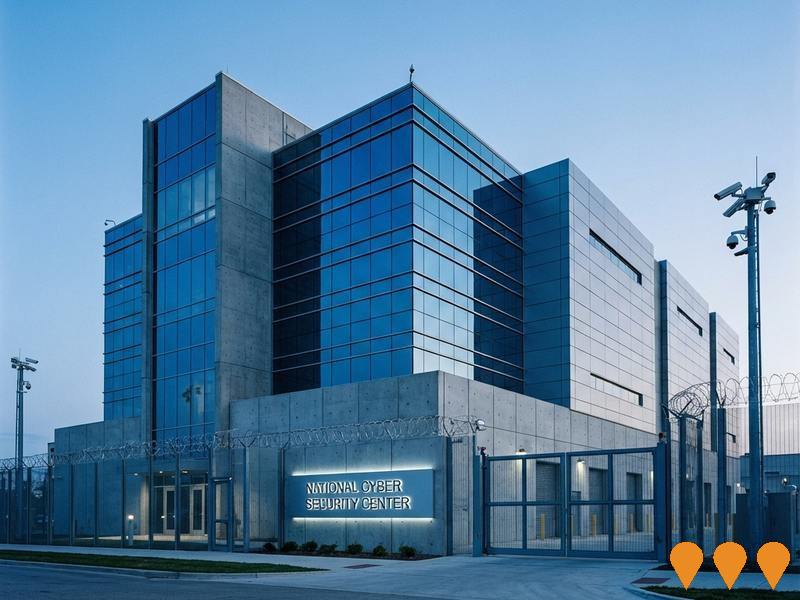Chart Color Schemes
est. as @ -- *
ABS ERP | -- people | --
2021 Census | -- people
Sales Activity
Curious about local property values? Filter the chart to assess the volume and appreciation (including resales) trends and regional comparisons, or scroll to the map below view this information at an individual property level.
Find a Recent Sale
Sales Detail
Population
Tullamarine has seen population growth performance typically on par with national averages when looking at short and medium term trends
Tullamarine's population, according to AreaSearch's analysis, is approximately 6772 as of August 2025. This figure represents an increase of 196 individuals, a rise of 3.0% since the 2021 Census which reported a population of 6576 people. The change was inferred from the estimated resident population of 6710 in June 2024 and an additional 93 validated new addresses since the Census date. This results in a population density ratio of 1754 persons per square kilometer, higher than the average across national locations assessed by AreaSearch. Overseas migration contributed approximately 74.8% of overall population gains during recent periods, driving primary growth in the area.
AreaSearch adopts ABS/Geoscience Australia projections for each SA2 area, released in 2024 with a base year of 2022. For areas not covered by this data, AreaSearch utilises VIC State Government's Regional/LGA projections from 2023, adjusting employing a method of weighted aggregation of population growth from LGA to SA2 levels. Growth rates by age group from these aggregations are applied across all areas for years 2032 to 2041. Future population trends forecast a significant increase in the top quartile of Australian statistical areas, with Tullamarine expected to grow by 2476 persons to 2041 based on latest population numbers, indicating an overall increase of 35.6% over the 17-year period.
Frequently Asked Questions - Population
Development
Residential development activity is lower than average in Tullamarine according to AreaSearch's national comparison of local real estate markets
Tullamarine has seen approximately 39 dwelling approvals per year over the past five financial years, totalling 199 homes. In FY26 so far, there have been 4 approvals recorded. The population has declined in recent years, yet development activity has remained adequate relative to this decline, benefiting buyers with more affordable housing options as new properties are constructed at an average cost of $369,000, below regional norms. This financial year has seen $623,000 in commercial development approvals, reflecting the area's residential nature.
Compared to Greater Melbourne, Tullamarine has significantly less development activity, 53.0% below the regional average per person, which typically reinforces demand and pricing for existing dwellings. New building activity consists of 22.0% standalone homes and 78.0% townhouses or apartments, creating more affordable entry points and suiting downsizers, investors, and first-home buyers. This represents a shift from the area's current housing composition of 60.0% houses, indicating decreasing availability of developable sites and reflecting changing lifestyles and demand for diverse, affordable housing options. Tullamarine has a population density of around 173 people per approval, reflecting a low-density area. By 2041, the area is projected to grow by 2,414 residents. At current development rates, housing supply may struggle to match population growth, potentially increasing buyer competition and supporting price increases.
Looking ahead, Tullamarine is expected to grow by 2,414 residents through to 2041. At current development rates, housing supply may struggle to match population growth, potentially heightening buyer competition and supporting price increases.
Frequently Asked Questions - Development
Infrastructure
Tullamarine has very high levels of nearby infrastructure activity, ranking in the top 20% nationally
Changes to local infrastructure significantly influence an area's performance. AreaSearch has identified twelve projects that could impact this region. Notable ones include Tullamarine Logistics Estate, 11 Ian Crescent Townhouses designed by DKO Architecture, Assembly Tullamarine, and The Quadrant Tullamarine. The following list details those most likely to be relevant.
Professional plan users can use the search below to filter and access additional projects.
INFRASTRUCTURE SEARCH
 Denotes AI-based impression for illustrative purposes only, not to be taken as definitive under any circumstances. Please follow links and conduct other investigations from the project's source for actual imagery. Developers and project owners wishing us to use original imagery please Contact Us and we will do so.
Denotes AI-based impression for illustrative purposes only, not to be taken as definitive under any circumstances. Please follow links and conduct other investigations from the project's source for actual imagery. Developers and project owners wishing us to use original imagery please Contact Us and we will do so.
Frequently Asked Questions - Infrastructure
Gladstone Park Shopping Centre Refurbishment and Expansion
Planned staged refurbishment and expansion of the Gladstone Park Shopping Centre in Gladstone Park, Victoria. The project aims to build on recent external repainting and public art upgrades by modernising facades and common areas, creating an improved dining precinct, introducing additional specialty retailers and enhancing site access, circulation and car parking, while retaining the centre's role as a key neighbourhood shopping destination anchored by major supermarkets and everyday services.
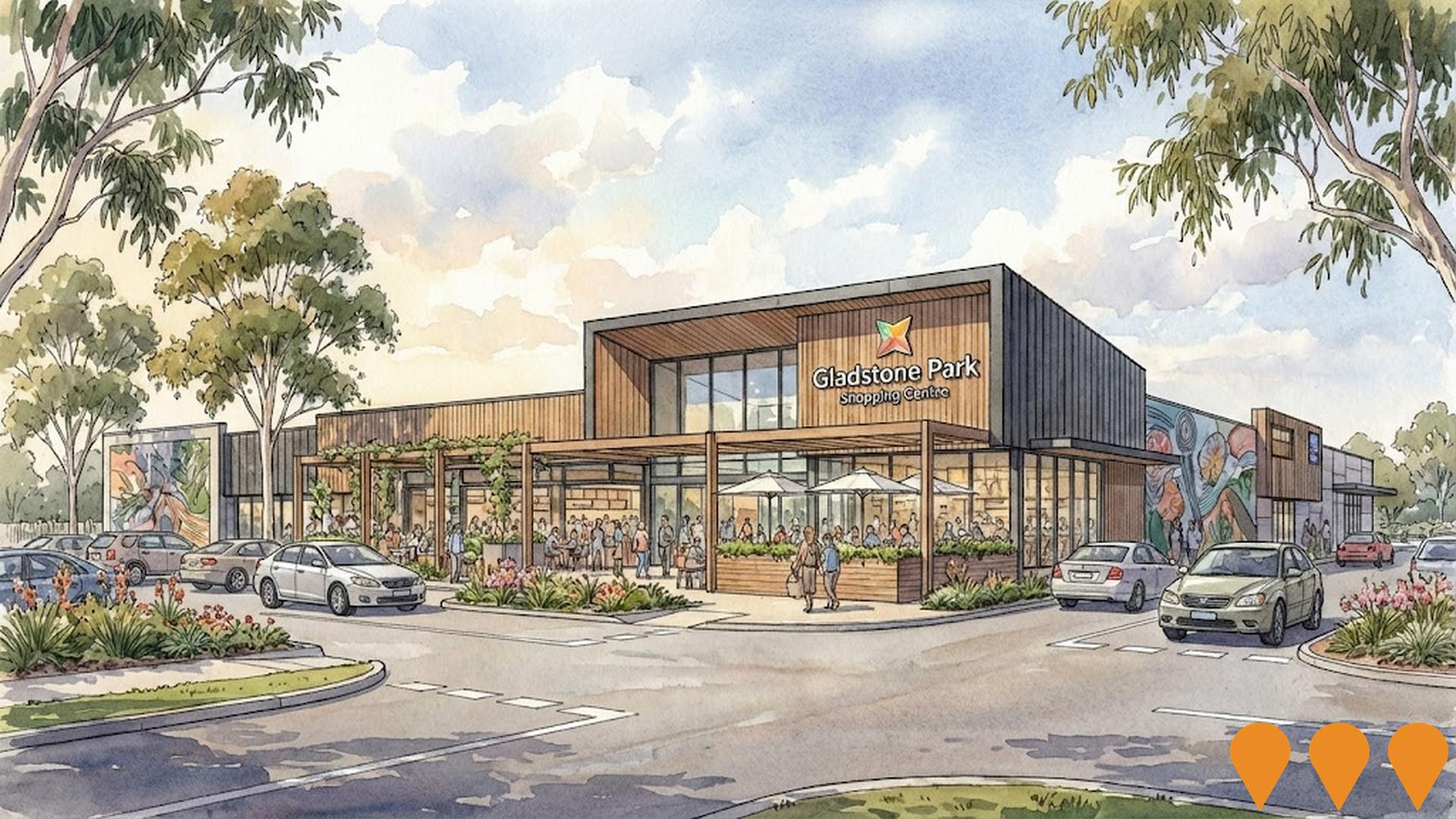
The Quadrant Tullamarine
Mirvac's 40-hectare master-planned corporate office and industrial park featuring premium A-grade office buildings and large-format warehousing directly opposite Melbourne Airport's main terminal precinct.
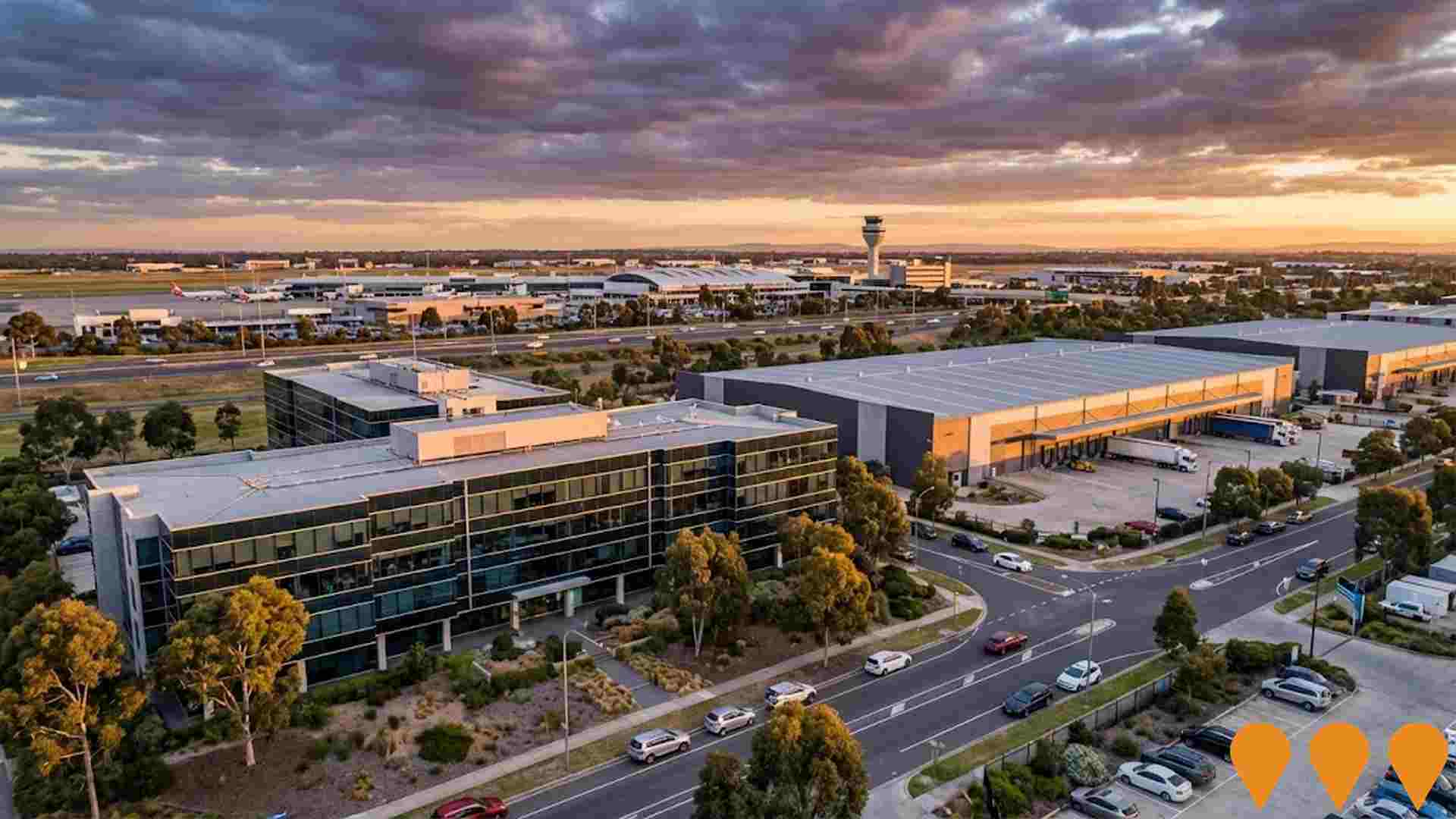
Outer Metropolitan Ring / E6 Transport Corridor
The Outer Metropolitan Ring / E6 Transport Corridor is a proposed 100km high-speed transport link for people and freight in Melbourne's north and west. The project will connect the Princes Freeway near Werribee to the Hume Freeway north of Craigieburn, incorporating a four-lane freeway and a four-track railway line. It aims to support population growth and improve transport connectivity in the outer suburbs, with construction unlikely to commence before 2030.
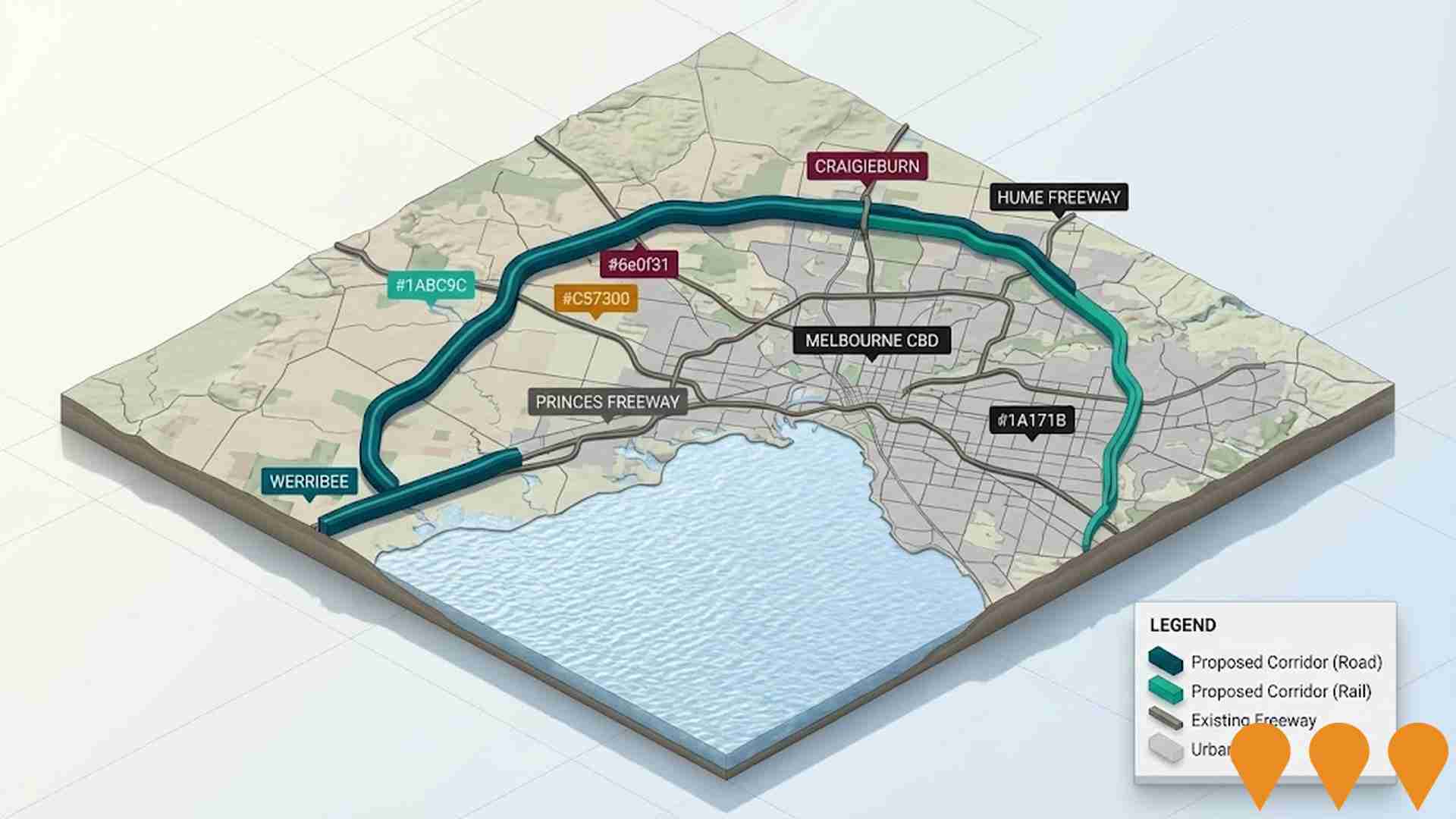
Tullamarine Logistics Estate
Goodman's premium industrial estate delivering over 100,000 sqm of modern warehouse and logistics facilities with direct access to the Tullamarine Freeway and Melbourne Airport.
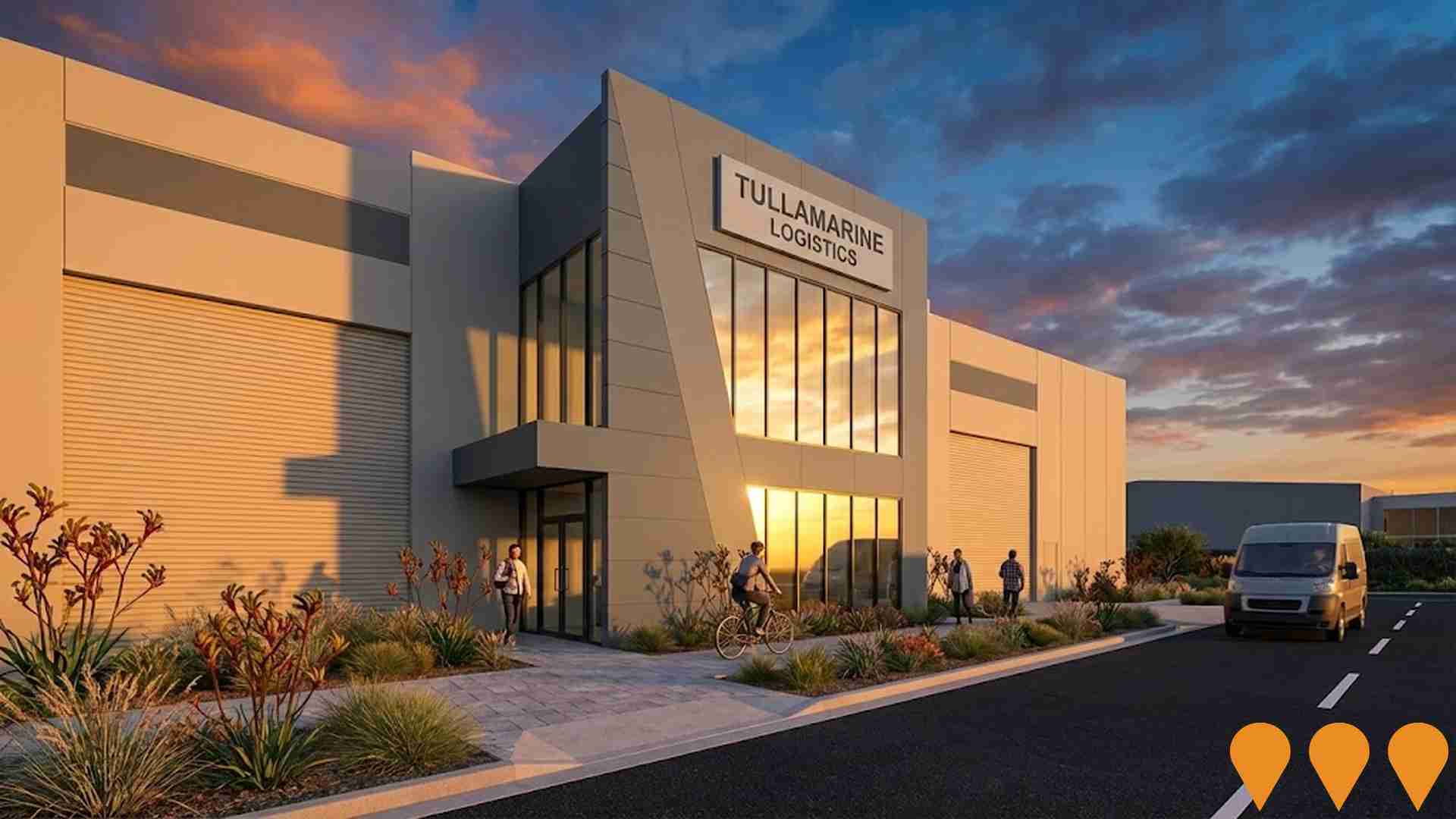
Assembly Tullamarine
A new 70,000 sqm state-of-the-art logistics and industrial estate by Charter Hall featuring multiple large warehouses with direct airport and freeway connectivity.
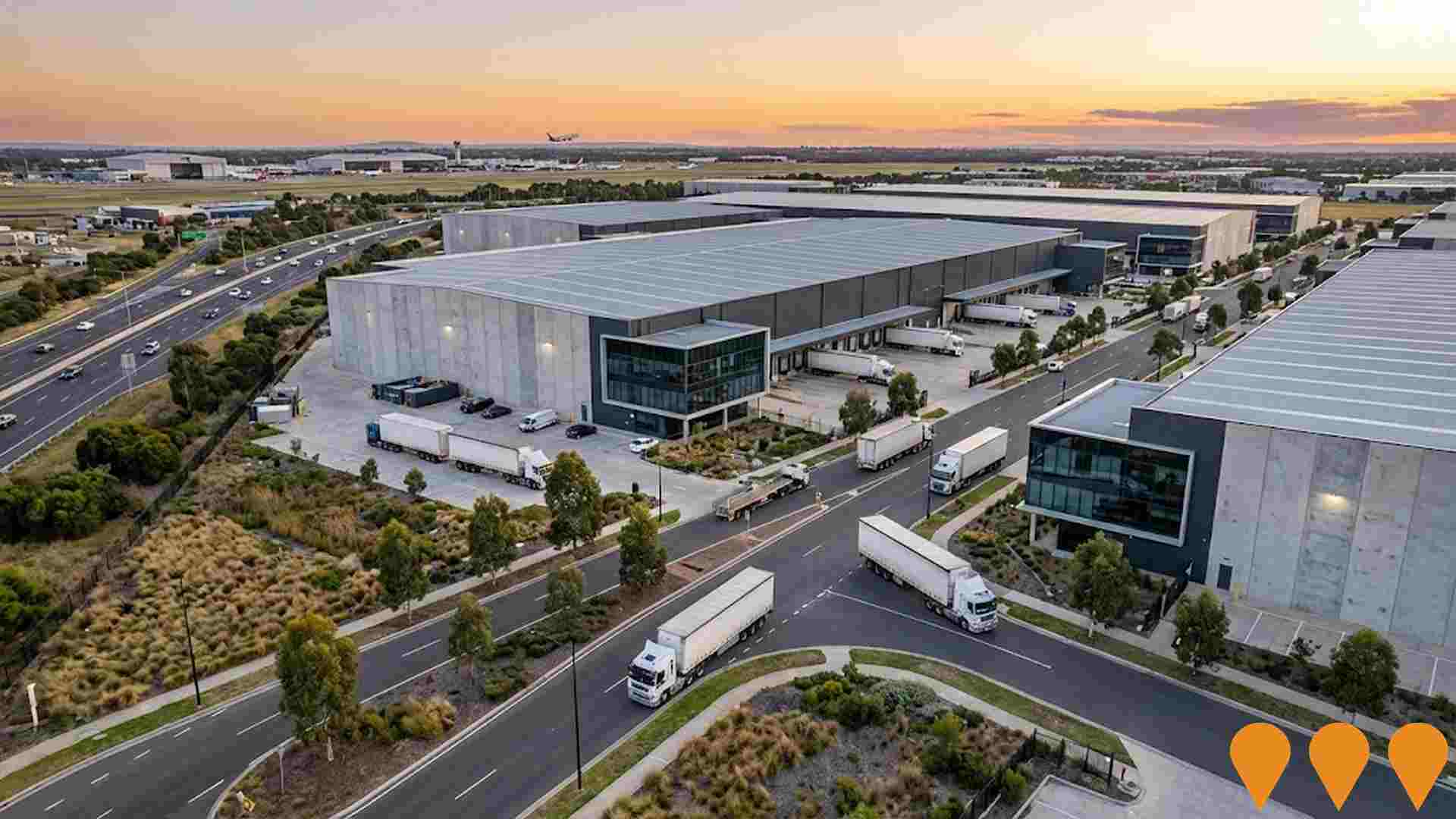
Western Ring Road (M80) Infrastructure Upgrades
Ongoing upgrades to M80 Ring Road including Western Ring Road sections near Airport West. Includes freeway management systems, widening, and improved interchanges with Tullamarine Freeway.
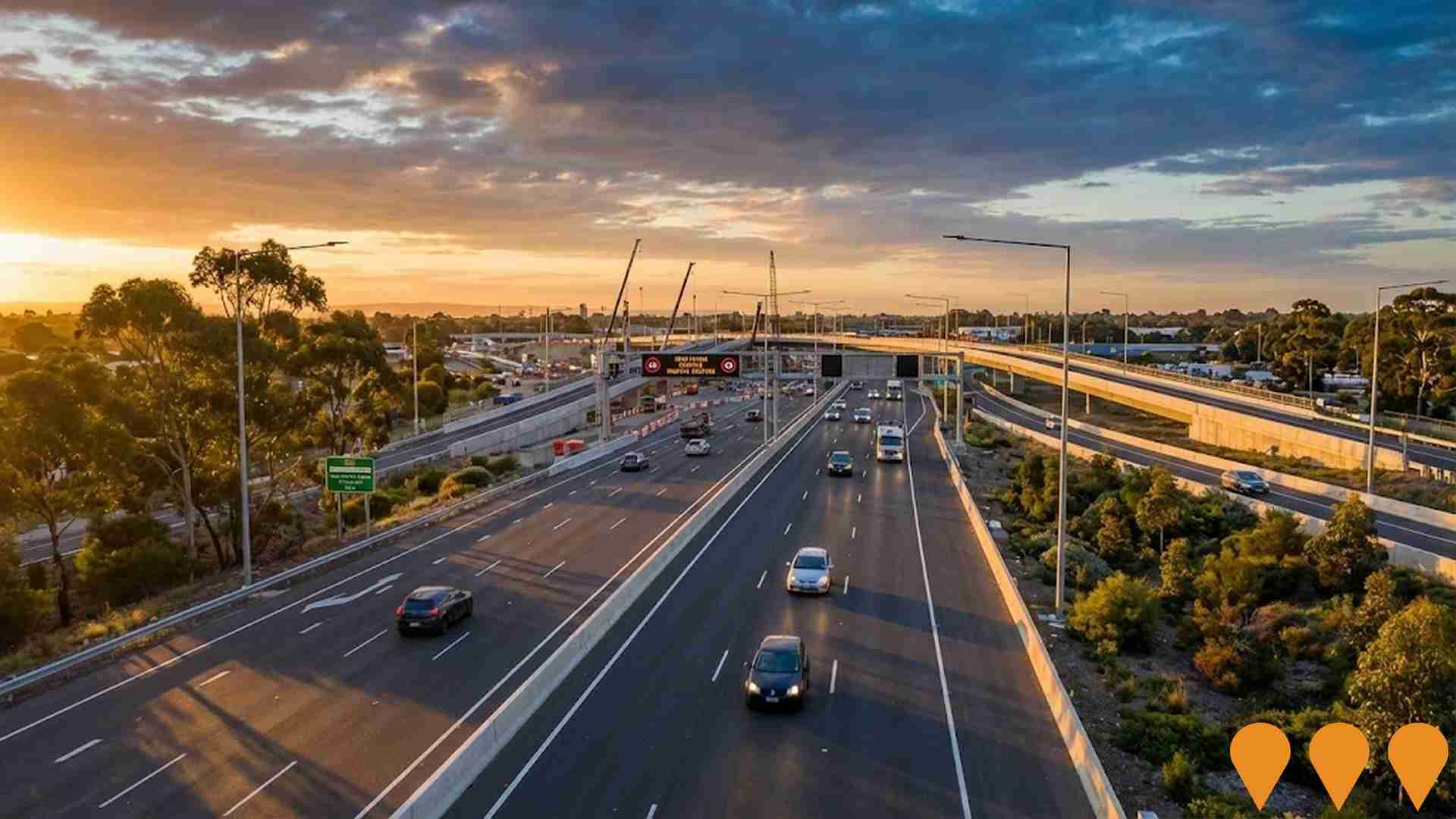
Gladstone Views Estate
Gladstone Views Estate refers to an established residential area in Gladstone Park near Mickleham Road and Gladstone Park Shopping Centre. The estate comprises around 800 detached homes with local parks and community facilities, and benefits from proximity to Gladstone Views Primary School and other local schools.

Oaklands Green
Boutique residential estate of 120 townhouses and land lots in Tullamarine, close to airport employment hubs and Westfield Airport West.

Employment
Tullamarine shows employment indicators that trail behind approximately 70% of regions assessed across Australia
Tullamarine has a skilled workforce with the construction sector being particularly prominent. Its unemployment rate is 6.3%.
Over the past year, there's been an estimated employment growth of 4.2%. As of June 2025, 3,579 residents are employed while the unemployment rate is 1.7% higher than Greater Melbourne's rate of 4.6%. Workforce participation in Tullamarine is lower at 58.1%, compared to Greater Melbourne's 64.1%. Employment is concentrated in construction, transport, postal & warehousing, and health care & social assistance.
The area has a high specialization in transport, postal & warehousing with an employment share of 2.3 times the regional level. Conversely, professional & technical services have lower representation at 5.7% versus the regional average of 10.1%. The worker-to-resident ratio is 0.7, indicating above-average local employment opportunities. Between June 2024 and June 2025, employment increased by 4.2%, labour force grew by 4.4%, leading to a slight rise in unemployment of 0.2 percentage points. In contrast, Greater Melbourne saw employment growth of 3.5% and labour force growth of 4.0%, with an unemployment increase of 0.5 percentage points. Jobs and Skills Australia's national employment forecasts from May 2025 project a 6.6% expansion over five years and 13.7% over ten years. Applying these projections to Tullamarine's employment mix suggests local growth of approximately 6.1% over five years and 12.7% over ten years, though this is an illustrative extrapolation and does not account for local population projections.
Frequently Asked Questions - Employment
Income
Income levels sit below national averages according to AreaSearch assessment
AreaSearch's latest postcode level ATO data for financial year 2022 shows Tullamarine had a median income among taxpayers of $52,540 and an average of $61,447. This is below the national average. Greater Melbourne's median was $54,892 with an average of $73,761. Based on Wage Price Index growth of 12.16% since financial year 2022, estimated incomes for September 2025 are approximately $58,929 (median) and $68,919 (average). Census data reveals Tullamarine's household, family and personal incomes rank modestly between the 29th and 33rd percentiles. Distribution data shows the $1,500 - 2,999 earnings band captures 32.8% of the community (2,221 individuals), mirroring regional levels where 32.8% occupy this bracket. Housing affordability pressures are severe with only 82.2% of income remaining, ranking at the 27th percentile.
Frequently Asked Questions - Income
Housing
Tullamarine displays a diverse mix of dwelling types, with above-average rates of outright home ownership
In Tullamarine, as per the latest Census, 60.2% of dwellings were houses with the remaining 39.8% being semi-detached, apartments, or other types. This differs from Melbourne metro's figures of 87.6% houses and 12.4% other dwellings. Home ownership in Tullamarine stood at 33.1%, with mortgaged dwellings at 32.0% and rented ones at 34.9%. The median monthly mortgage repayment was $1,733, lower than Melbourne metro's $1,834. The median weekly rent in Tullamarine was $351, compared to Melbourne metro's $369. Nationally, mortgage repayments were lower at $1,733 against the Australian average of $1,863, and rents were also lower at $351 compared to the national figure of $375.
Frequently Asked Questions - Housing
Household Composition
Tullamarine features high concentrations of lone person households, with a lower-than-average median household size
Family households constitute 64.1% of all households, including 25.6% couples with children, 24.4% couples without children, and 12.5% single parent families. Non-family households account for the remaining 35.9%, with lone person households at 33.4% and group households comprising 2.6%. The median household size is 2.3 people, which is smaller than the Greater Melbourne average of 3.2.
Frequently Asked Questions - Households
Local Schools & Education
Educational outcomes in Tullamarine fall within the lower quartile nationally, indicating opportunities for improvement in qualification attainment
The area has university qualification rates of 21.0%, significantly lower than the Greater Melbourne average of 37.0%. This presents both a challenge and an opportunity for targeted educational initiatives. Bachelor degrees are the most common at 15.0%, followed by postgraduate qualifications (4.0%) and graduate diplomas (2.0%). Trade and technical skills are prominent, with 34.1% of residents aged 15+ holding vocational credentials – advanced diplomas (10.9%) and certificates (23.2%).
A substantial 24.4% of the population is actively pursuing formal education, including 8.0% in primary education, 5.2% in secondary education, and 4.1% in tertiary education. Tullamarine Primary School serves the local educational needs within Tullamarine, with an enrollment of 230 students as of a recent report. The school has typical Australian school conditions (ICSEA: 992) and offers balanced educational opportunities. It focuses exclusively on primary education, with secondary options available in surrounding areas. Local school capacity is limited, with only 3.4 places per 100 residents compared to the regional average of 17.5, resulting in many families traveling to nearby areas for schooling.
Frequently Asked Questions - Education
Schools Detail
Nearby Services & Amenities
Transport
Transport servicing is good compared to other areas nationally based on assessment of service frequency, route connectivity and accessibility
Tullamarine has 30 active public transport stops, all of which are bus stops. These stops are served by 7 different routes that together facilitate 1,700 weekly passenger trips. The accessibility of these services is rated as good, with residents on average being located 211 meters from the nearest stop.
On a daily basis, there are an average of 242 trips across all routes, which equates to approximately 56 weekly trips per individual stop.
Frequently Asked Questions - Transport
Transport Stops Detail
Health
Health performance in Tullamarine is lower than average with common health conditions somewhat prevalent across both younger and older age cohorts
Tullamarine faces significant health challenges.
Common health conditions are somewhat prevalent across both younger and older age cohorts. The rate of private health cover is relatively low at approximately 51% of the total population (~3,426 people). The most common medical conditions in the area are arthritis and mental health issues, impacting 8.8% and 7.9% of residents respectively. 67.0% of residents declare themselves completely clear of medical ailments compared to 76.3% across Greater Melbourne. As of 2016 data, 21.5% of residents are aged 65 and over (1,458 people), which is higher than the 10.8% in Greater Melbourne. Health outcomes among seniors present some challenges, broadly in line with the general population's health profile.
Frequently Asked Questions - Health
Cultural Diversity
Tullamarine is among the most culturally diverse areas in the country based on AreaSearch assessment of a range of language and cultural background related metrics
Tullamarine has a high level of cultural diversity, with 35.6% of its population born overseas and 36.0% speaking a language other than English at home. Christianity is the predominant religion in Tullamarine, making up 64.1% of the population, compared to 45.4% across Greater Melbourne. The top three ancestry groups in Tullamarine are English (17.6%), Australian (16.6%), and Other (16.1%).
Notably, Italian ancestry is overrepresented at 11.7%, Maltese at 2.9%, and Greek at 4.8%, compared to regional averages of 6.8%, 1.8%, and 2.0% respectively.
Frequently Asked Questions - Diversity
Age
Tullamarine's population is slightly older than the national pattern
Tullamarine has a median age of 40, which is slightly higher than Greater Melbourne's figure of 37 and Australia's average of 38 years. Compared to the Greater Melbourne average, Tullamarine has an over-representation of the 75-84 age group (9.4% locally) and an under-representation of the 15-24 age group (8.8%). Between 2021 and now, the 75-84 age group has increased from 7.1% to 9.4% of the population, while the 65-74 cohort has decreased from 11.2% to 9.8%. By 2041, demographic modeling suggests Tullamarine's age profile will change significantly, with the 75-84 age group projected to grow by 442 people (70%), from 633 to 1,076 individuals.


